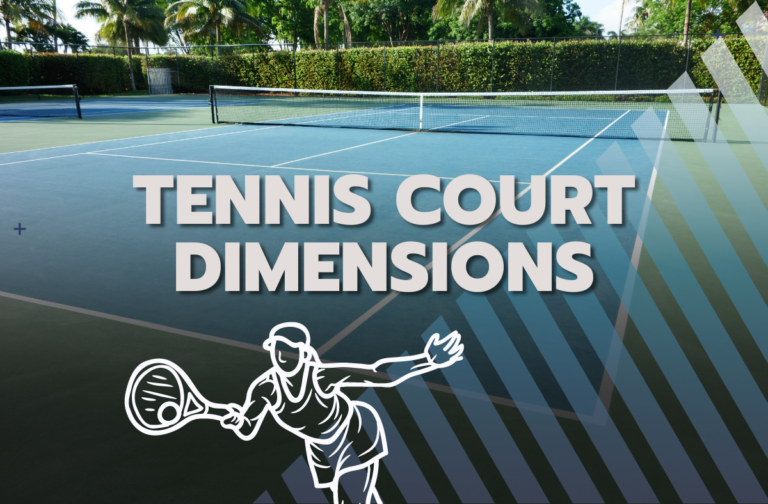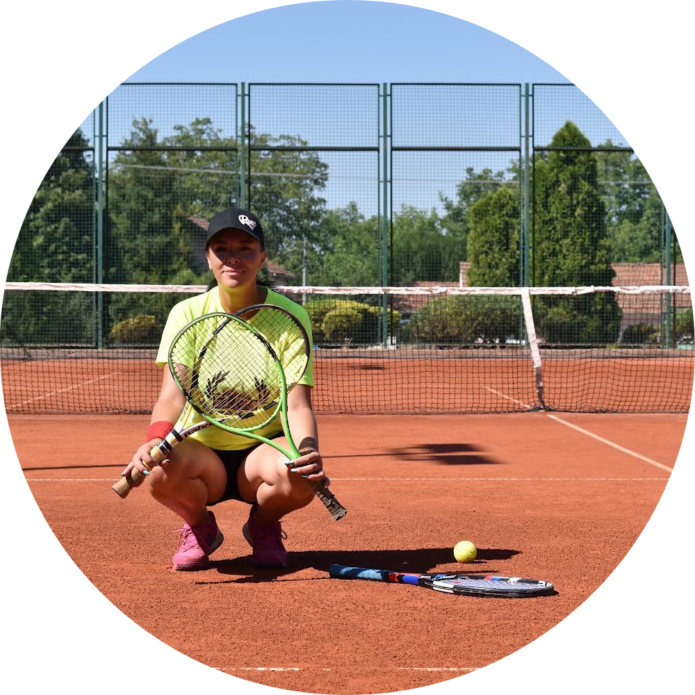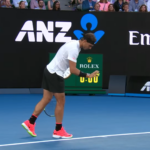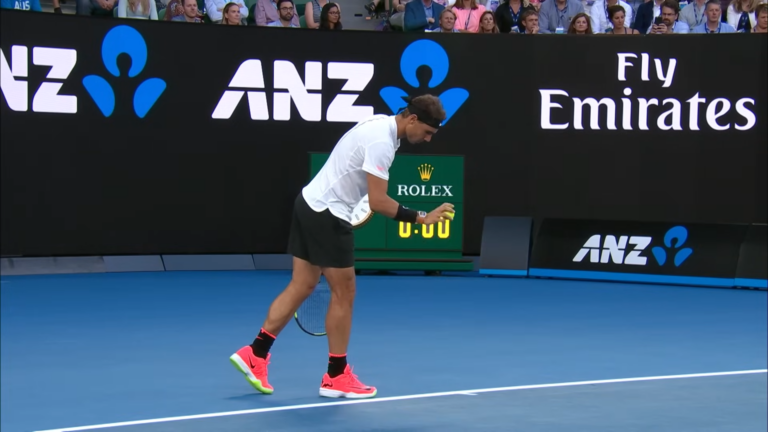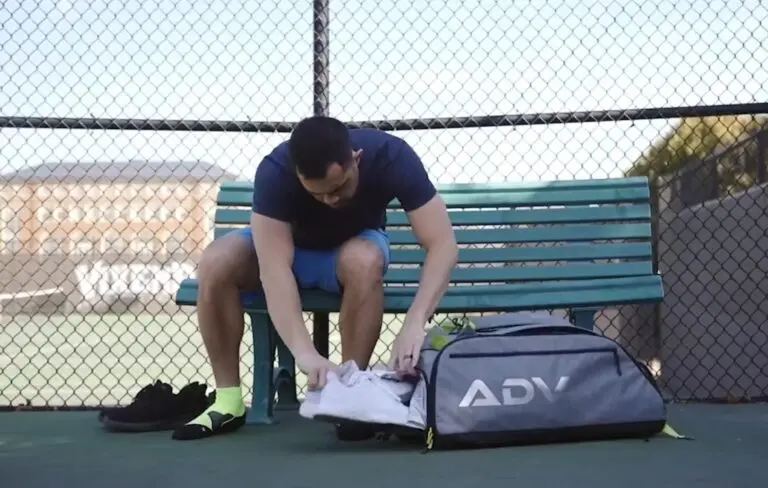Are you looking to install a Tennis court or are simply curious about the size of a Tennis court’s dimensions? We’ve provided all the official sizes for each area of the court.
1. Tennis Court Dimensions & Court Size
Let’s look at the standard Tennis court dimensions, including the length, width, and surface area for both singles and doubles courts.
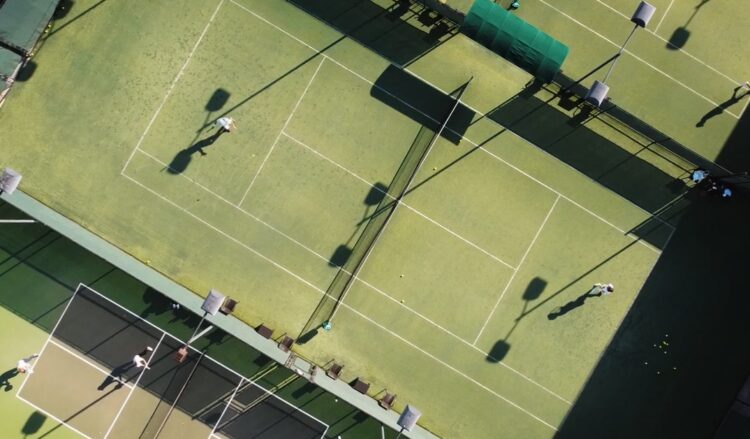
Tennis Court Length
The overall length of a professional regulation size Tennis court is 78 feet or 23.77 meters or 26 yards.
Tennis Court Width
The same rules apply to the width of a Tennis court. Regulation Tennis courts have specific guidelines. The typical width is approximately 36 feet or 10.97 meters. In yards, that’s about 12.
The width of court players’ use for recreational purposes may vary. Although there is one official length for professional tennis courts, the width differs between both singles and doubles courts.
2. Singles and Doubles Size Courts
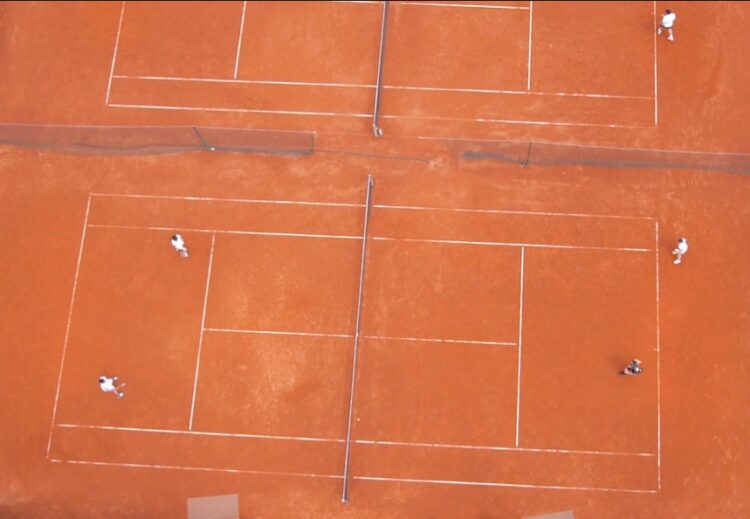
Singles Tennis Court Dimensions
Singles matches are played on a singles court which is 78 feet in length and 27 feet wide. The width is what differs from singles and doubles matches, with ‘doubles alley’ being outside the playing area in singles matches.
Doubles Tennis Court Dimensions
Doubles matches are played on a doubles court which is 78 feet in length, the same as a singles court. However, the width is what differs in a doubles game, with a total width of 36 feet. This is because the doubles alleys on either side of the Tennis court are now considered in play.
Doubles sidelines are an additional 4.5ft away from the singles sidelines on either side of the court. That’s an extra 9ft of playing space during doubles matches. This area is known as doubles alley (see right).
3. Areas of a Tennis Court
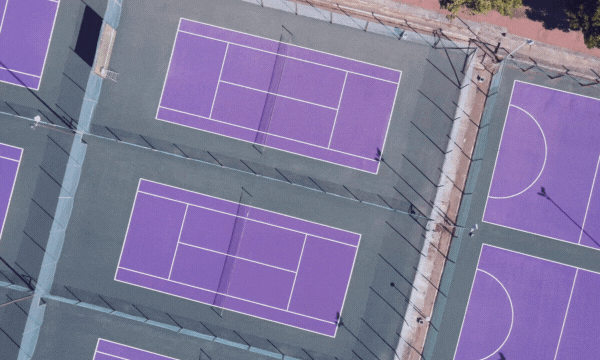
A Tennis court’s official playing area for a doubles match is 260.87 square meters. Whereas the total playing area for a singles court is 195.65 square meters. Tennis courts are separated into different areas with lines, such as the left and right service boxes, backcourt, and double alleys.
Service Boxes
There are two service boxes on either side of the net, a deuce service box (right) and an advantage service box (left). Separated by the center service line and separated from no man’s land by the service line.
Both boxes operate based on how the score is determined in a tennis match. A player starts the game with a serve to the deuce service box. If the score is tracked on the deuce service box, the serves go toward that box. When the score is an ad out or ad, players serve toward the ad service box.
The length of a service box is 21 feet or 6.4 meters, while the width is 13.5 feet or 4.1 meters. A service box’s area is 283.5 square feet or 26.3 square meters.
Backcourt (No Man’s Land)
The backcourt or ‘no man’s land is a Tennis court’s largest box. The dimensions of the backcourt are 18 feet in length or 5.5 meters and 27 feet or 8.2 meters in width. 486 square feet or 45.2 square meters make up the total area.
Doubles Alley
The doubles alley is made up of boxes that distinguish a doubles match from a singles match. As a shot is only considered ‘in play’ in this area during a doubles match. They are the long rectangular boxes that run downside of each side of the Tennis court.
The double alleys are 39 feet or 11.9 meters in length and 4.5 feet or 1.4 meters in width. With the total area measuring 175.5 square feet or 16.3 square meters.
4. Lines of a Tennis Court
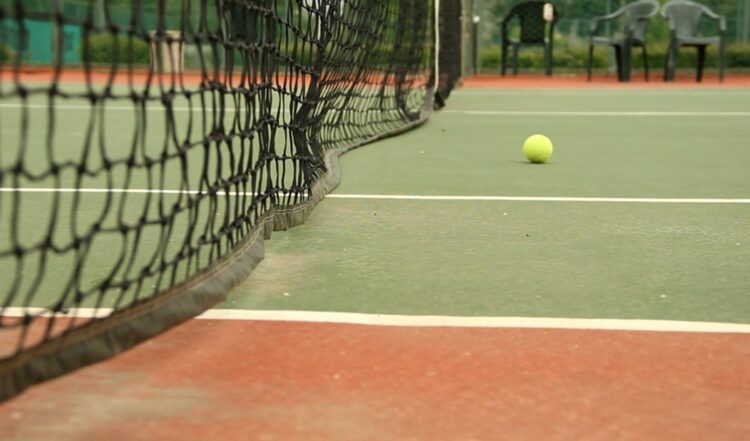
Although the lines on a Tennis court are used to separate different playing areas. They also each serve a purpose and have their own name. They include; the baseline, service line, center service line, singles sidelines, doubles sidelines, and center mark.
These lines also have a standard thickness. With a minimum width of 2 inches and the baseline being up to 4 inches in width.
The Baseline
The baseline can be found at the end of each side of the court and is where you’ll see players serving from. Each baseline is 36 feet in length on standard courts.
On each baseline is a center mark. It sits at the midway point and designates what side of the court a player must serve from. Players serve across the court diagonally into the opposite service court.
Service Line
The service line runs parallel with the baseline, sits 21 feet from the net, and is 27 feet in length.
Center Service Line
A center service line runs perpendicular to the net, separating the two service boxes on each side of the court. True to its name, the line connects the center or midpoint of the two service lines. A center service line is usually two inches wide. The total length is 21 feet on each side of the net.
Singles Sidelines
The singles sidelines designate the side of the court in a singles match and are 78feet in length. When a player serves or hits a ball and it lands outside these lines, the ball is considered ‘out of bounds.
Doubles Sidelines
Doubles sidelines are the lines on the outer edge of the court. They run parallel to the singles sidelines and designate the edge of the court during a doubles match. Doubles sidelines are also 78 feet in length.
Closing Remarks
If you’re unfamiliar with the dimensions of a tennis court, all of the official dimensions and requirements can be overwhelming. It takes a bit of studying and time. There are recommendations and minimum requirements for international and recreational courts. You can consult ATP and ITF resources for these dimensions.
FAQs
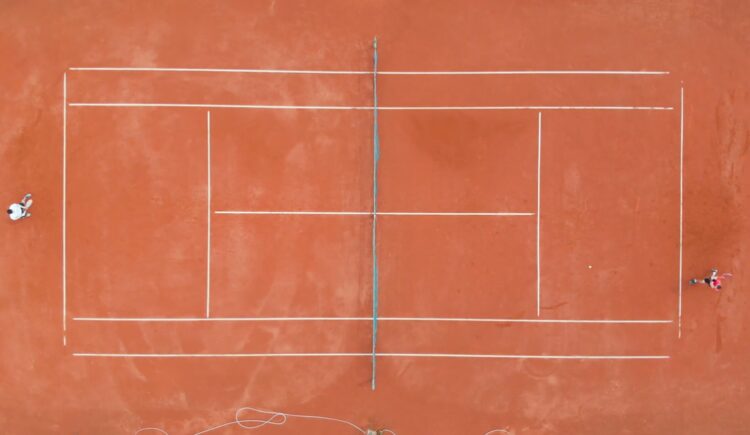
How Much Space do you Need for a Tennis Court?
For a standard court, you need at least 120 feet in length and 60 feet in width. The total area should be 7,200 square feet. A tournament court 130 feet in length, 70 feet in width, and an area of 9,100 square feet.
How Wide is the Lines on a Tennis Court?
The lines of a Tennis court should be a minimum of two inches in width. Whereas the Baselines can be up to four inches wide.
How High is an Indoor Tennis Court?
At a minimum, there should be a clearance of at least 40 feet above the net, baseline, and backstop. The minimum recommendation for a recreational court is 29.5 feet above the net, 20 feet above the baseline, and 16 feet above the backstop.
Are all Tennis Courts the Same Size?
Official Professional and tournament regulation Tennis courts are the same sizes. There may be slight differences in areas around the marked court which can vary between venue locations.
There are also variations in size for recreational or junior courts. These can be smaller than standard tennis court dimensions, especially if a location does not have sufficient room for a standard size court.
What is the Total Area of a Tennis Court?
A tennis court’s total area is typically around 260.87 square meters. This represents the complete area of a double court. The total area of a singles court is usually around 195.65 square meters.

